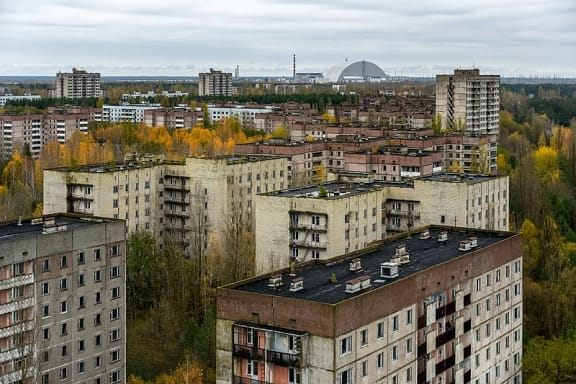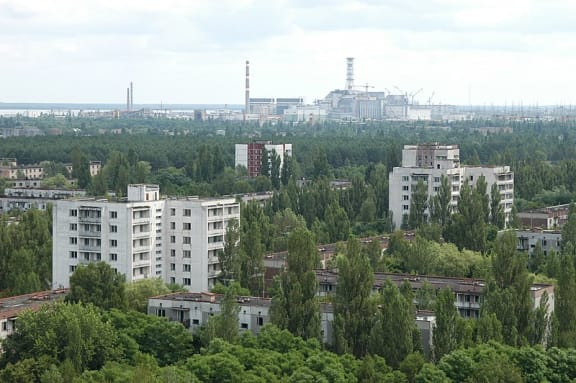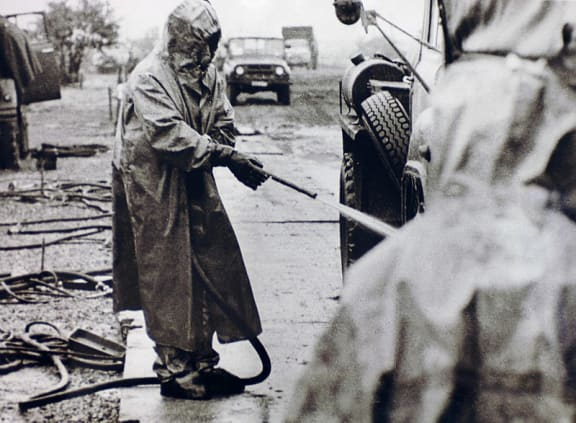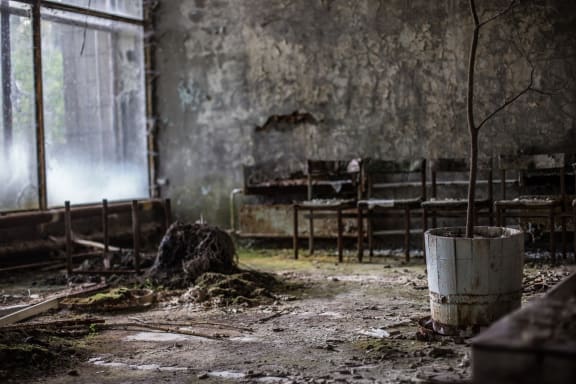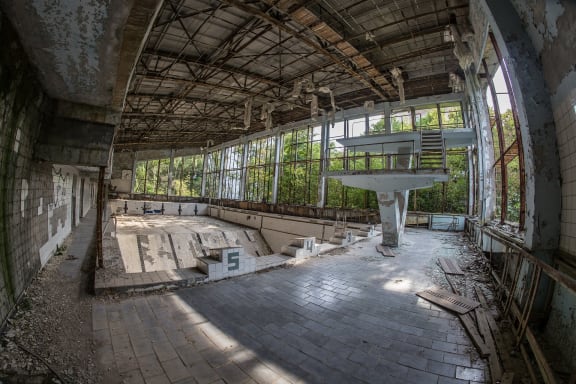It's the television docudrama everyone is talking about: the series Chernobyl, which tells the story of the horrific 1986 Soviet nuclear accident.
In today’s visit to the sound archives of Ngā Taonga Sound & Vision, Sarah Johnston is going to take us back to 1986 and how we heard about the disaster here in New Zealand.
The accident happened on Sat 26 April 1986 in Ukraine. But infamously the Soviet authorities kept it secret, they cut the phone lines from Chernobyl to the outside world, until a power plant in Sweden picked up puzzling high levels of radiation, a couple of days later on 28 April (29 April in New Zealand).
The is how the first news broke on Morning Report:
“Good morning the Soviet Union has admitted that an accident has taken place at a nuclear power station North of Kiev and there were some casualties. The official news agency TASS reports that measures are being undertaken to eliminate the consequences of the accident at the plant where one of the reactors was damaged. There’s no indication yet of the extent or condition of the casualties or whether anyone was killed.
“Earlier as a wave of radiation swept over Sweden, Finland, Denmark and Norway officials said it was probably due to a leak at a nuclear power station in one of the Soviet Baltic republics, possibly on Sunday, at that stage Moscow denied there’d been any accident.”
By Midday Report that same day, RNZ’s news team had jumped on the phone and interviewed the closest journalist they could find to the action which was the Times correspondent Chris Walker who was in Moscow – and here we hear the name of the location of the disaster for the first time.
“So far they’ve only admitted, which is very rare for them, that there has been an accident at a nuclear power station north of Kiev, the capital city of the Ukraine which has a population of over 2 million people.
“The official announcement says there’s damage to an atomic reactor and it’s caused some casualties, no details of how many.
"A terse statement from the council of ministers, which was reported by TASS the official news agency, said: ‘Measures are being taken to eliminate the consequences of the accident, aid is being given to those who have suffered injury.’ No further details there, but there have been unconfirmed reports from Kiev that buses have been used, or taken over, to try and evacuate people from the immediate area, which is at least 30 miles north of the capital.”
“When you say 30 miles north of the capital, do they actually give the name of the place?”
“Yes, they do, a Russian plant which is known as Chernobyl, a nuclear power station, and our accounts in Moscow are that it is at least a village, if not a substantial township around this. But this is vague information at this early stage, it was only admitted here earlier tonight there had been an accident following these widespread reports in Scandinavia of a radioactive alert.”
The buses referred to in that clip were the just over one thousand buses that were commandeered in Kiev and sent from Kiev to evacuate Pripyat.
Once word was out there was reaction worldwide – and condemnation that the Soviet Union was so unforthcoming with information about the disaster, especially in Europe, the governments there were horrified.
The TV series spells out how close the plant came to a catastrophic melt-down which would have devastated a huge area of Europe and Scandinavia – although none of this was known at the time.
The Cold War was still alive at this point – although Mikhail Gorbachev was in power and was making tentative steps towards arms control talks with Britain.
In this report from Keith Chalkley in Britain, a day after the news became public, we hear Prime Minister Margaret Thatcher telling the House of Commons this Soviet secrecy surrounding the disaster is worrying.
“These matters go way beyond the borders of any country and must be dealt with on a global scale and I hope that all the details of that terrible accident in Chernobyl will be reported to the international atomic energy agency so that we may all profit from it, and inspectors will be able to go in to see, and deduce, precisely what happened.” – Margaret Thatcher.
Keith Chalkley ends his report saying winds were carrying the radioactive dust across Europe.
“The radioactive dust cloud meantime is said to be progressing along the French Riviera towards Spain, it’s then expected to be blown by winds in a northerly direction across Belgium, northern France, Holland and Britain over the next 48 hours.”
Nuclear issues were everywhere in the early-mid 1980s, Sarah says.
“I was a teenager at the time and we really did think the world could end any day. As well as Chernobyl and radioactive pollution, there was French nuclear testing in the South Pacific, on-going threat of nuclear arms escalation, protests over visits to New Zealand by American nuclear-powered naval vessels – and this culminated in New Zealand leaving ANZUS and our anti-nuclear legislation being passed the year after Chernobyl, in 1987.”
Finally we hear a snippet from a 2012 RNZ Music programme which Sarah recommends for people wanting to understand 1980s nuclear paranoia.
No Nukes – How Music Helped Ban the Bomb looks at the part popular music played in the anti-nuclear movement.
To end today, here’s a snippet David Lange and then Midnight Oil’s Peter Garrett, who was a very active anti-nuclear campaigner in the 1980s.
